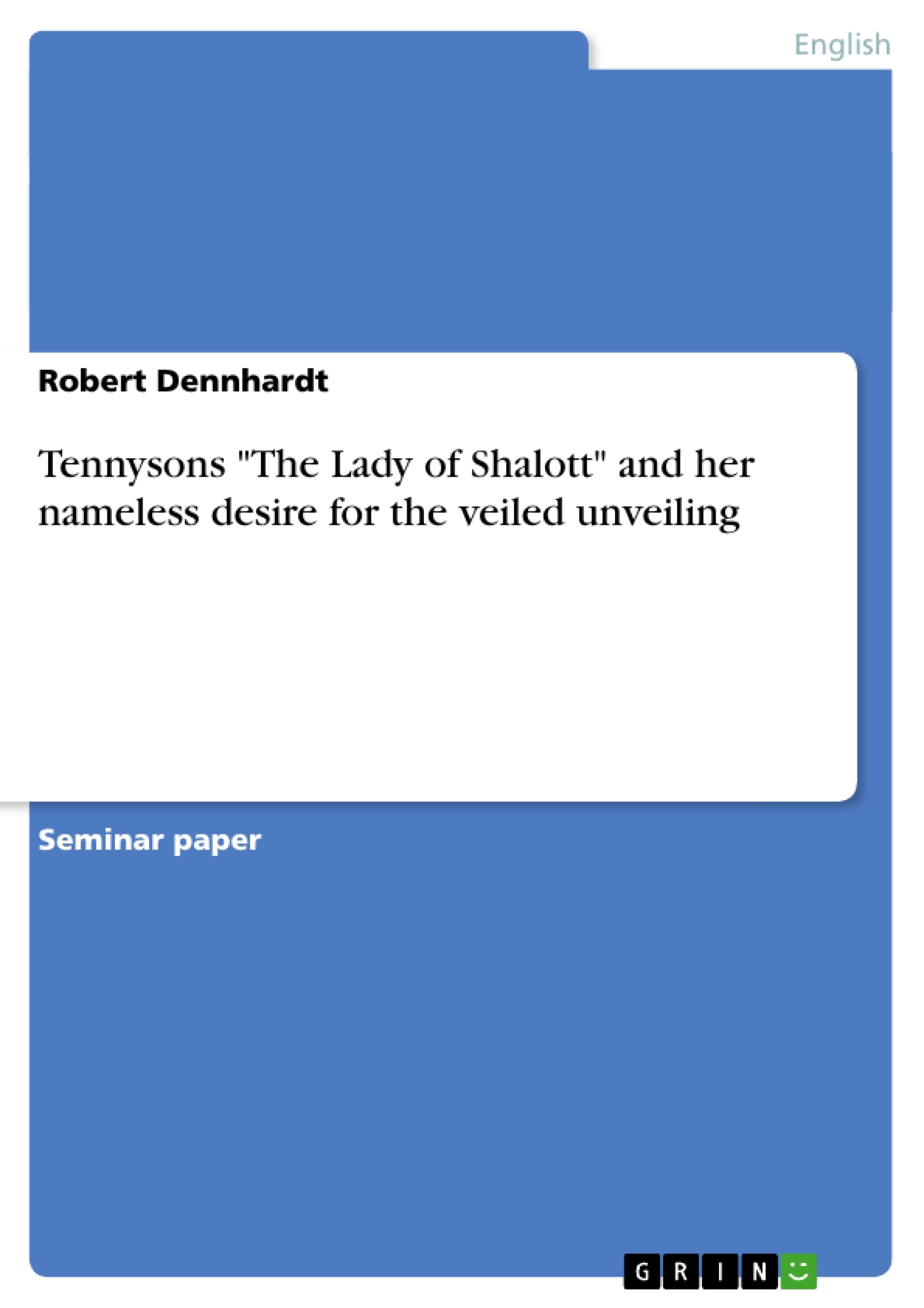Once upon a time Umbert Eco quoted Tennyson’s continental contemporary Mallarmé who wrote about avoiding a single absolute word sense concerning the typo-logographic space and epistemic-symbolic landscape:
"Einen Gegenstand benennen bedeutet, die drei Viertel des Genusses am Gedicht zu unterdrücken, welche aus dem Glück bestehen, nach und nach zu entschlüsseln, es hervorzubringen […] dies ist der Traum […] Es muß vermieden werden, daß ein einziger Sinn sich aufdrängt: der leere Raum um das Wort herum, (…), die räumliche Komposition des Textes tragen dazu bei, dem Wort eine Aura des Unbestimmten zu verleihen und es auf tausend verschiedene Dinge hindeuten zu lassen." (Eco 1989, 121f.)
Various literary critics describe a rather psychological dilemma within Tennyson’s work in general which seems important for the understanding of The Lady of Shalott which in my opinion is not theme of this work. Once with-in the discourse of art and mythopoetics this dilemma resembles Tennyson’s struggle for both artistic strategy as well as rhetorical and logical validity (Alaya 1970, 289.) Another remark refers to Tennyson’s ”difficulty in leaving the world and passing into „a Nameless, shadow-less realm“ which insert the reader into autopoietic ordering „spaces between images and words.“ (Colley 1985, 370 and 377.) An expression of this dilemma we find in Tennyson’s The Lady of Shalott with the metaphorical presence in absence of sword and primarily window which will be discussed later on. But the expressive representing or non-symbolic Nameless cannot exist if the symbolic is the only associative between the imaginary and the real which is the other side of the symbolic per se.
Inhaltsverzeichnis (Table of Contents)
- Entrance and Tennyson's dilemma
- RSI and the Lady's fall into the landscape of desire
- The sin of magic and Mary's desire
- Exit and junctions
Zielsetzung und Themenschwerpunkte (Objectives and Key Themes)
This paper explores Tennyson's poem The Lady of Shalott through the lens of discourse theory. The author aims to analyze the poem's construction and its relationship to concepts of desire, magic, and the symbolic order. The analysis draws on the works of Saussure, Derrida, Lacan, and Foucault, among others.
- The role of desire in the Lady's journey
- The intersection of magic and reality in the poem
- The symbolic landscape of the Lady's world
- The relationship between the Lady and the outside world
- Tennyson's use of language and metaphor
Zusammenfassung der Kapitel (Chapter Summaries)
- Entrance and Tennyson's dilemma: This chapter introduces the poem and explores the challenges that Tennyson faced in constructing it. It draws on the work of Mallarmé and Carlyle to illustrate the importance of elusiveness and mystery in the poem. It also introduces the concepts of discourse and the symbolic order.
- The sin of magic and Mary's desire: This chapter delves into the Lady's desire for the outside world and the consequences of her transgression. It discusses the interplay between magic, reality, and the symbolic order. The chapter also touches on the role of the mirror and its significance within the poem.
Schlüsselwörter (Keywords)
Key concepts and themes explored in this paper include: discourse theory, the symbolic order, desire, magic, the Lady of Shalott, Tennyson, Lacan, Derrida, Saussure, Foucault, post-structuralism, deconstruction, and the interplay between literature and discourse.
- Quote paper
- Dr. des. Robert Dennhardt (Author), 2002, Tennysons "The Lady of Shalott" and her nameless desire for the veiled unveiling , Munich, GRIN Verlag, https://www.grin.com/document/68393



